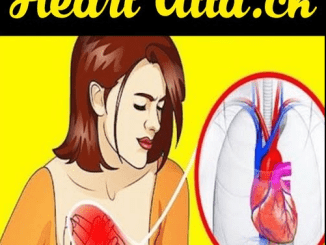When it comes to heart health, most people think about chest pain, shortness of breath, or high blood pressure. But what if your feet were trying to tell you something just as important? Believe it or not, your feet can be one of the earliest and clearest signs that something’s wrong with your cardiovascular system. Pain, numbness, coldness, or swelling in your feet could actually point to clogged arteries or heart problems like peripheral artery disease (PAD) and even heart failure.
Let’s explore how your feet are connected to your heart—and what symptoms you should never ignore.
The Feet-Heart Connection

It might sound odd, but your feet are an important window into your cardiovascular health. Why? Because they’re the furthest point from your heart, and they depend heavily on healthy blood flow. When your arteries are clear and functioning properly, oxygen-rich blood travels all the way down to your toes with ease.
But if you have clogged arteries—due to plaque buildup or narrowing vessels—your feet are likely to feel it first. Reduced circulation can lead to cold feet, slow-healing wounds, tingling, or even hair loss on your toes. In some cases, it’s not your shoes that are the problem—it’s your arteries.
Understanding Peripheral Artery Disease (PAD)
PAD is one of the clearest ways your feet can warn you about potential heart trouble. This condition happens when fatty deposits (plaque) build up in the arteries, restricting blood flow to the limbs—especially the legs and feet.
Common symptoms of PAD include:
- Leg or foot pain when walking or climbing stairs (called claudication)
- Cramping or fatigue in the legs that eases with rest
- Coldness in one foot compared to the other
- Weak or absent pulse in your feet
- Sores or wounds on the feet that don’t heal
According to the Cleveland Clinic, PAD isn’t just a leg issue—it’s a red flag for broader heart problems. If your peripheral arteries are blocked, chances are your coronary arteries are too.
Video : 9 Signs You Have Clogged Arteries & Heart Problems
The Importance of Early Diagnosis
PAD doesn’t always scream for attention. Sometimes it starts with subtle changes, like slight discomfort in your legs or noticing that your feet are colder than usual. But early diagnosis is critical to prevent serious complications like tissue death, infections, and even amputation in extreme cases.
Doctors often use an ankle-brachial index (ABI) test to screen for PAD. This non-invasive test compares blood pressure in your ankle to blood pressure in your arm. A big difference may indicate poor blood flow and signal the presence of PAD.
They might also check for weak or absent pulses in your feet, or use ultrasound imaging to identify blockages.
If you have risk factors like smoking, diabetes, high cholesterol, or a family history of heart disease, don’t brush off symptoms like cramping or numbness in your feet. These early signs could save your life.
How Poor Circulation Affects Your Feet
Let’s break down what happens when blood can’t get to your feet efficiently:
- Pain and numbness: With less blood flow, your nerves don’t get the oxygen they need, which can cause tingling, burning, or total numbness.
- Cold feet: Your toes might feel like blocks of ice, even in warm weather. That’s because blood isn’t circulating properly.
- Slow-healing wounds: A tiny cut or blister may take forever to heal—or worse, get infected—due to lack of nutrients reaching the site.
- Hair loss: Losing hair on your toes or lower legs may seem minor, but it can signal poor blood supply over time.
These aren’t random annoyances. They’re your body’s way of saying, “Hey, something’s not right!”

Heart Failure and Swollen Feet
Heart problems don’t only show up as shortness of breath or chest pain. Sometimes, the first thing you notice is that your shoes feel tighter than usual. That’s because heart failure can cause peripheral edema—swelling in your feet, ankles, and legs.
When your heart isn’t pumping efficiently, fluid can build up in your lower body due to gravity. You might notice your socks leaving deeper imprints than usual or that your feet feel heavy and puffy by the end of the day.
Edema can also be caused by kidney or liver problems, but when it’s paired with fatigue or shortness of breath, it’s often related to your heart.
Diabetes, Nerve Damage, and Increased Risk
If you have diabetes, your risk for both PAD and heart disease is higher. That’s because high blood sugar can damage the small nerves and blood vessels in your feet, leading to diabetic neuropathy.
When that nerve damage is combined with reduced circulation, it creates the perfect storm: you might not feel pain from a cut or blister, and the wound might not heal quickly. This dramatically increases the risk of infections, ulcers, and in severe cases, amputation.
That’s why regular foot checks and blood sugar control are so essential for diabetics. Your feet can be your early warning system—if you pay attention to them.

When to Seek Medical Help
Don’t ignore your feet. If you’re noticing:
- Burning, tingling, or numbness
- Changes in skin color or temperature
- Cold feet or toes that don’t warm up
- Leg pain when walking
- Swelling that doesn’t go away
…it’s time to talk to your doctor. These may not just be signs of aging—they could be signs of serious cardiovascular issues.
Ask your doctor about checking your ankle-brachial index or getting an ultrasound to see how well your blood is flowing. You might also benefit from blood tests to check cholesterol, blood sugar, and kidney function—all of which tie back to vascular health.
How to Support Healthy Circulation
Want to keep your feet happy—and your heart healthier? Start with lifestyle changes that support healthy arteries:
- Eat a heart-friendly diet: Focus on vegetables, whole grains, healthy fats, and lean proteins. Avoid trans fats and too much sugar.
- Get moving: Exercise promotes good circulation. Even walking 30 minutes a day can reduce symptoms of PAD.
- Quit smoking: Smoking damages blood vessels and speeds up plaque buildup. Quitting is one of the best things you can do for your heart.
- Monitor blood pressure and cholesterol: Keep those numbers in check with regular checkups.
- Manage blood sugar: If you’re diabetic or prediabetic, blood sugar control is key.
Video : Eat This…Opens Arteries to Heart & Brain! Dr. Mandell
Conclusion
Your feet might seem like a strange place to look for signs of heart problems—but they’re often the first to show warning signals. Whether it’s numbness, coldness, swelling, or slow-healing wounds, these symptoms could mean your arteries are struggling.
Don’t ignore them. Your feet are sending a message from your heart—and listening could be the step that saves your life. Stay curious, stay proactive, and step into better heart health, one foot at a time.


